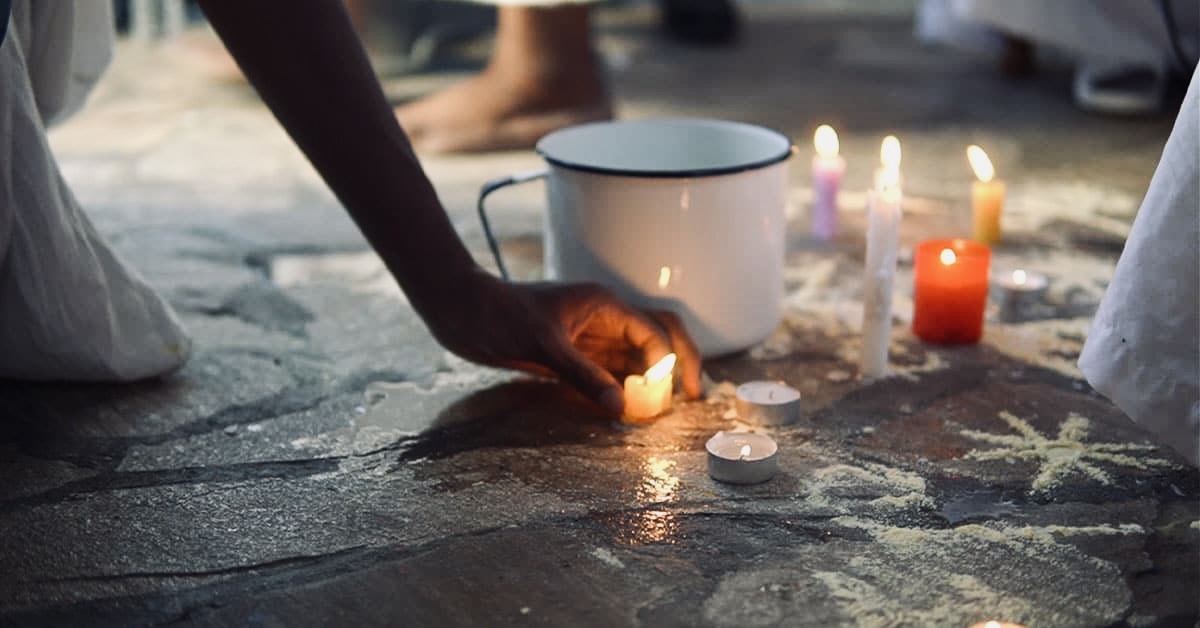It is challenging to talk about Haiti in ways unexplored by the standard media or scholarly research. Often, discussions about the country revolve around its struggles with gang violence, political volatility, and the havoc wrought by natural disasters. Yet, these conversations merely skim the surface of a complex, multi-layered reality — one entrenched in historic internal conflicts and traumas that have effectively curbed the societal progress that might have preempted such crises. To observe the news today is to see the flames consuming significant fragments of this heritage — fragments that belong to us — obliterating commercial ventures and the core of a legacy meticulously handed down through generations. This destruction feels profound and personal, like it is erasing Haiti from the inside out. And the consequences endure. I believe that a country that loses its past forfeits its future.
Architectural Losses
On April 3, 2024, gangs attacked the Haitian National Library, one of the many historic monuments clinging to the memory of a different Haiti. Founded in 1939, The Bibliothèque Nationale d’Haiti holds thousands of historical documents and archives, testaments to a past that could help define a future. This incredible library was also the meeting point for debates, social and political discussions, and poetic exchanges. The place is now looted and ransacked, with the library director sounding the alarm about the importance of over 200 years of documents and the danger the archive faces at the hands of the ransackers. This attack is one of many on Haiti’s oldest educational institutions, including the École National Supérieure, École Nationale des Arts, and the Petit Seminaire Collège Saint Martial — all pillars of Haiti’s educational system. Despite lackluster support from the Haitian government, these institutions have contributed to the edification of some of Haiti’s finest.
A short distance away lies the Bibliothèque Haïtienne des Frères de l’Instruction Chrétienne, located on the beautiful campus of the Institution Saint-Louis de Gonzague, founded in 1912. Its library, one of the most comprehensive in the Caribbean, holds an unparalleled collection of historical documents, including the most extensive compilation of newspapers in the nation, and hosts a unique collection of material ephemera, including an essential set of stamps and coins. These archives span from 1813 to 1900, chronicling Haiti’s emergence from the revolution, its triumph over slavery, and its transition to an agrarian society. Despite ongoing efforts to digitize this wealth of knowledge in a bid to immortalize these treasured recollections, the collections are at risk, along with the architecture.
The rich heritage of Port-au-Prince has fallen prey to violence and destruction. Roads like “Grand Rue,” the main boulevard downtown used to compete with the Malecon in the Dominican Republic or Cuba, with its colonial-style houses, its wide streets, and beach access. I recall stories from my father and his friends about how they would go out to the cities for a night out, partying until the late hours of the night. Years of neglect of the infrastructure, the 2010 earthquake, and the destruction in the now gang-ruled area have destroyed the beautiful buildings and the memories they housed of much happier days. Downtown is now grim, empty, and soiled with rubbish, a far cry from the neighborhood’s glory days with its charming gingerbread-style houses, relics of a French heritage, and Caribbean colonial architecture.
Granted, the gangs are not solely responsible for what is going on with the degradation of Haiti’s cultural heritage, which started long before the insurgency. Pleas for preservation and protection have echoed throughout the country, only to be met with silence by the Haitian government. Beautiful buildings such as the Cathédral de Port-au-Prince, built between 1884 and 1914, and once one of Haiti’s most iconic buildings, have been left in ruins since its collapse in the earthquake on January 12, 2010. The area surrounding the church has become rife with gang violence, and debris has piled up all around, making this once-historic structure desolate. And the issues of patrimonial site destruction aren’t just limited to the capital. On April 13, 2020, in the north of the country, the church of Our Lady of Immaculate Conception in the town of Milot in Cap Haitian burned down. The chapel was located on the ruins of Sans Souci Palais, a declared UNESCO Heritage site since 1982. Built in 1810 by King Henri Christophe, it is considered one of the oldest institutions in the Caribbean. It is now also left in ashes, with the memory of the kingdom attached.
Are the gangs’ wrecking destruction merely a symptom of a deeper malaise — a festering bitterness or an expression of wrath towards the institutions that have failed them?
There are stories like these throughout the country: heritage sites, important Catholic or Vodou sites destroyed or ransacked, tangible and intangible cultural elements being lost. This systemic neglect has allowed natural disasters like earthquakes to take their toll. Erosion has been caused by chronic mismanagement and a lack of investment in cultural stewardship. The result is a gradual decay of the essence of Haitian innovation and creativity — its artistry, literature, numismatics, hopes, and dreams — all left to languish and deteriorate, neglected by a pervasive indifference.
This ongoing destruction of the heritage raises profound questions: Are the gangs’ wrecking destruction merely a symptom of a deeper malaise — a festering bitterness or an expression of wrath towards the institutions that have failed them? Does this scorched-earth approach to erasing memories, annihilating the physical embodiments of the nation’s historical and cultural milestones, reflect a broader crisis of values? Is my sensitivity to what is being lost a testimony of my privilege — that I attended one of these institutions and so perhaps have a different understanding of the value they hold, the knowledge and the good they once offered?
Intangible Heritage and Identity
It’s not just the physical heritage that is at risk; many Haitian cultures and traditions have been affected by the recent events. Holy Week in Haiti has always been sacred and a rich display of Haitian culture, both in terms of the culinary display with the multitude of dry fish dishes and the highly anticipated Easter spread. During the same week, the skies of Haiti were always filled with kites, and children showed off their skills in dominating the April winds. It would also be an opportunity to showcase the uniqueness of Haitian artistry on those colorful kites. This year, due to the fear of gang attacks and rising inflation, the skies were empty, and so were the plates. These practices are at risk of being lost, practices that forged community between children, parents, and neighbors as they created kites to enter local competitions. As for the food, the prices of the famous dried fish have increased immensely, causing families to move away from the tradition, arguing that they would spend the same on a week’s worth of food instead of a single meal.
Around the capital, you can also see the lack of “Machann” in the streets. Normally these individual vendors would be out at dawn, preparing the common “chyen jambe” on the side of the streets, feeding children on their way to school, and day workers around the capital. Now, the roads are left empty. The insecurity has pushed away those street markets, along with the food sharing, the conversations, and the oral traditions passed among the community. Public places in Haiti are empty of laughter, from students’ after-school traditions, to carnival rhythms, street arts and crafts, and all the other aspects that make up the beloved Haitian flare.
With each fading tradition, a strand of Haiti’s identity unravels. The escalating crisis begs the question: Does the road Haiti now treads lead to a complete erasure of its cultural lineage, the vibrancy of its past, present, and the promise of its future? Years of turmoil have chiseled away at the nation’s essence. Yet, the enduring beacon of Haitian resilience has been its deep-rooted heritage and self-awareness — a legacy that, until recent times, stood as an unwavering testament to its history and identity. What is left when all the good of the past, the core of a country’s self-identity, is taken away? How does a country rebuild itself without any guiding points of its history?




















